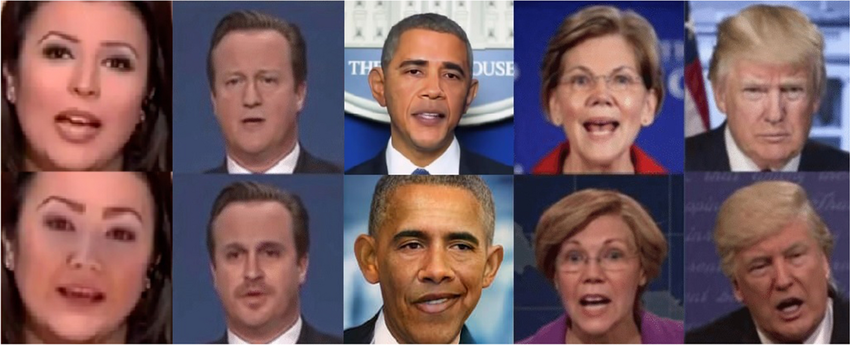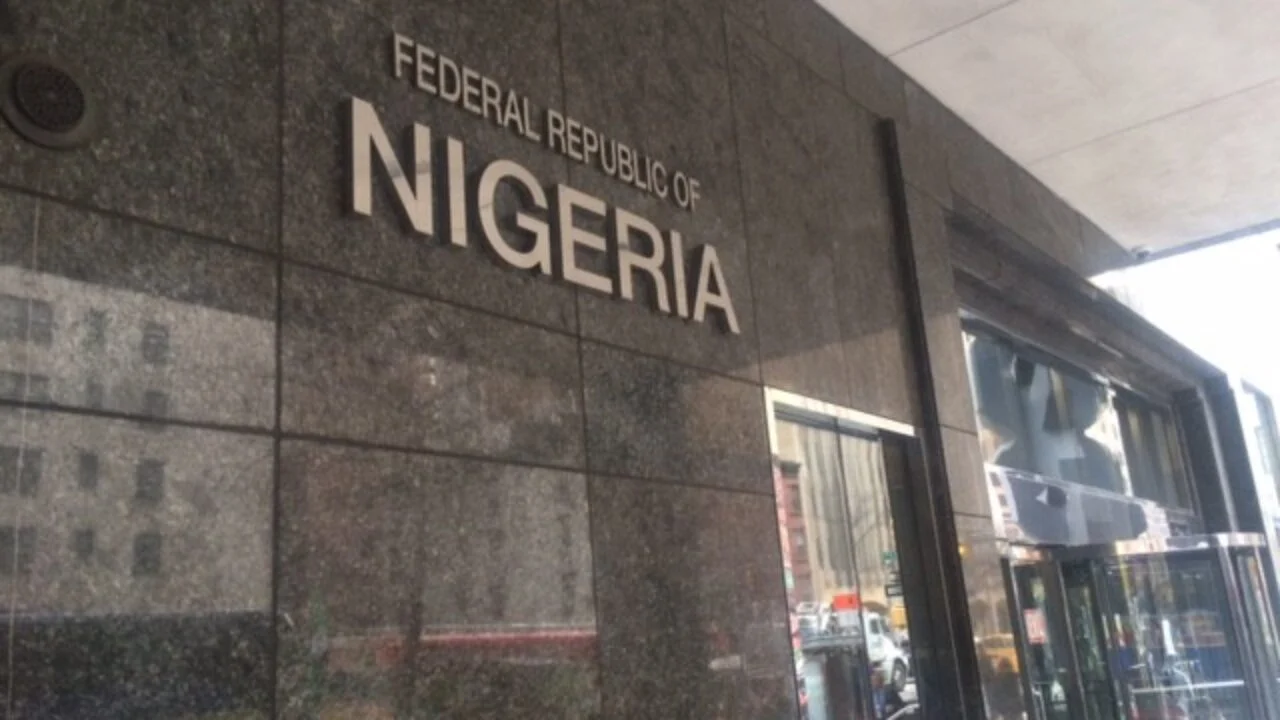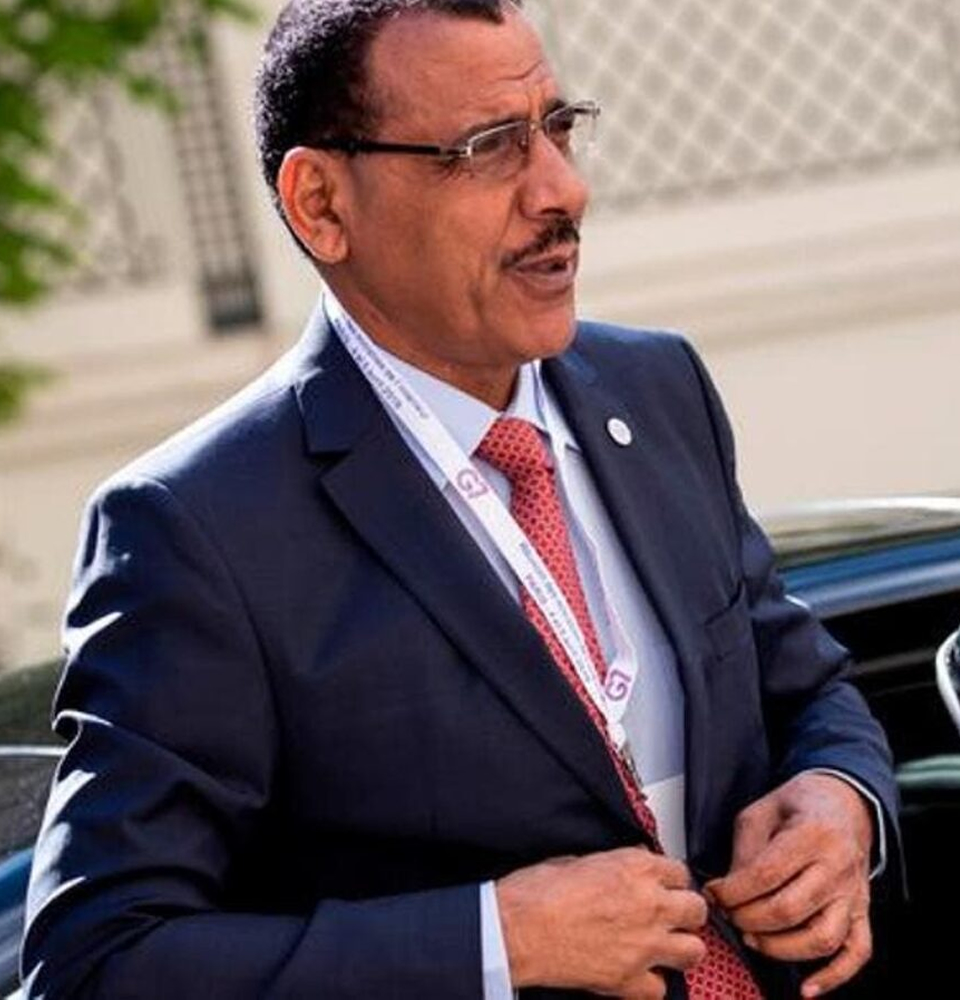News
The Threat of Deepfakes: AI and ML in the Fight Against Synthetic Media

The Threat of Deepfakes: AI and ML in the Fight Against Synthetic Media
Deepfakes, a type of synthetic media produced using artificial intelligence have lately been somewhat well-known due to their incredible realism in audio, video, and picture manipulation. Deepfakes, which are now used for public dishonesty, false information distribution, and reputation damage, have progressed from a benign form of online amusement to a major cause of worry. Their increasing complexity makes it more difficult to separate actual from fake information. To keep people’s trust in news sources in today’s fast-paced, social media-driven media environment, deepfakes must be identified and prevented. Given the prospective disruption of political processes, effects on financial markets, and erosion of public trust brought about by deepfakes, effective detection techniques are important. Artificial intelligence (AI) and machine learning (ML) are used to neutralise this threat.
AI driven systems are advancing in their capacity to detect deepfakes using pattern, anomaly, and deviation analysis of audiovisual data. AI uses deep learning and neural networks to enable the recognition of changing material, therefore protecting digital platforms from the dangers of synthetic content. This article covers the significance of artificial intelligence and machine learning in the battle against deepfakes as well as the continuous developments of these technologies.
The Evolution of Deepfakes
From simple picture editing to complex film and audio creation, deepfakes have developed over time. Though the technique originated in early work on face recognition in the 1990s, the word “deepfake” did not initially come up until 2017. Deepfakes might overcome its initial limitation (that of face-swapping in still images) partly due to developments in machine learning, especially Generative Adversarial Networks (GANs). Using a generator of phoney material and a discriminator, the GANs introduced in 2014 aim to distinguish between real and fake. This competitive process continually improves the quality of contents that are generated. By 2018, deepfake technology had progressed to creating convincing video and audio, sparking both awe and concern.
Today, deepfakes can manipulate facial expressions, lip movements, and voice in real-time, blurring the line between reality and fiction. This technology has found applications in entertainment and education but also poses significant challenges. Privacy concerns arise as anyone’s likeness can be co-opted without consent. Security threats emerge from potential misuse in fraud or disinformation campaigns. Perhaps most critically, deepfakes erode trust in digital media, making it increasingly difficult to discern authentic content from fabrications.
AI and Machine Learning Approaches to Detecting Deepfakes
Detecting deepfakes requires sophisticated AI and machine learning (ML) techniques capable of recognizing subtle anomalies in synthetic content. Deepfakes, generated using techniques like Generative Adversarial Networks (GANs), often contain small discrepancies that are difficult for the human eye to detect but can be identified through AI-powered analysis. AI-based detection techniques leverage vast amounts of data and advanced algorithms to learn patterns that differentiate real media from deepfakes.
- Neural Network: One of the primary AI techniques used is neural networks, specifically deep learning models like Convolutional Neural Networks (CNNs). CNNs are widely employed because they can process visual information, analyze patterns, and detect inconsistencies in images and videos. By training on real and fake datasets, CNNs learn to spot irregularities in the pixel structure or frame transitions that signal manipulation. These networks are capable of detecting the subtle differences between a real human face and a digitally altered one, even if the deepfake is highly realistic.
- Facial Movement Analysis: Real faces move naturally, with specific muscle patterns and micro-expressions that deepfake algorithms struggle to replicate perfectly. AI models analyse these facial dynamics, tracking the synchronization between lip movement and audio, eye blinking rates, or slight shifts in facial muscles to detect discrepancies in manipulated videos.
- Audio Inconsistencies: Deepfake videos often feature mismatches between the audio track and the visual content. For instance, AI can pick up on unnatural speech patterns, irregularities in sound frequency, or mismatches between mouth movements and spoken words. These abnormalities can be flagged by AI systems designed to match audio to visuals.
- Pixel-level Analysis: This is another effective AI-driven approach. Deepfake generators, while sophisticated, tend to leave pixel anomalies, particularly at the boundary of manipulated regions (e.g., around the eyes, mouth, or skin texture). AI can detect these pixel-level irregularities, which are often too subtle for human viewers to notice but are indicative of digital tampering.
- AI-Powered Spatial and Temporal Analysis: This can scrutinize video frames for inconsistencies across time. While an individual frame may appear realistic, examining the sequence of frames often reveals inconsistencies in motion or lighting, which deepfakes fail to maintain consistently. These subtle distortions can signal that a video has been digitally altered.
The Arms Race: Deepfake Creation vs. Detection
The battle between deepfake creators and detectors is a continuous arms race. As AI and machine learning tools improve at detecting synthetic media, deepfake creators respond by refining their techniques, making detection increasingly difficult. This cycle of advancement is driven by the dual capabilities of AI, which plays a key role in both the creation and detection of deepfakes.
On one side, deepfake creators leverage technologies like Generative Adversarial Networks (GANs) to produce increasingly sophisticated synthetic media. GANs consist of two neural networks—the generator, which creates fake content, and the discriminator, which attempts to identify real versus fake content. As the discriminator improves, the generator learns to produce even more realistic deepfakes, creating an ever-evolving challenge for detection systems. This feedback loop enables deepfake creators to generate media that are harder to distinguish from authentic content. On the other side, advancements in AI detection technologies prompt creators to innovate further. For example, when facial movement analysis became a popular detection method, deepfake algorithms improved their ability to replicate natural facial dynamics. Similarly, pixel-level analysis of deepfakes spurred creators to enhance image resolution and reduce detectable inconsistencies. As detection techniques evolve, so do the methods of countering them, resulting in a constant tug-of-war.
AI itself is central to both sides of this arms race. The same machine learning models that power detection systems also underpin deepfake generation tools. This dual role of AI presents a unique challenge—while it helps in defending against synthetic media, it also serves as the foundation for producing increasingly convincing deepfakes. The result is a perpetual cycle of creation and detection, where advances on one side directly fuel innovation on the other. This arms race continues to shape the future of media integrity and security.
Key Technologies in Deepfake Detection
The rapid advancement of deepfakes has prompted the development of sophisticated AI and machine learning technologies to detect synthetic content. These technologies harness the power of neural networks, deep learning models, and advanced forensics techniques to identify even the most subtle manipulations. Here’s a detailed look at some of the top technologies used in deepfake detection.
- Convolutional Neural Networks (CNNs): Convolutional Neural Networks (CNNs) are among the most widely used AI tools in deepfake detection. CNNs excel at processing and analyzing visual data, making them ideal for detecting image and video anomalies. By breaking down visual content into smaller pixel-level units, CNNs can identify inconsistencies that are typically invisible to the human eye. For example, they can detect subtle differences in skin texture, lighting, and facial expressions across frames. Trained on massive datasets of real and fake media, CNNs learn to spot even the slightest signs of tampering. Their ability to handle complex visual data makes them central to the detection of deepfake videos.
- GANs for Detecting Deepfakes: Generative Adversarial Networks (GANs), the very technology used to create deepfakes, are also employed in detecting them. GANs consist of two neural networks: a generator that creates fake content and a discriminator that tries to distinguish between real and fake. In detection, GANs are used to reverse-engineer deepfake generation processes by analysing and comparing real content with synthetically produced media. Detection-focused GANs excel at identifying unusual artifacts in deepfake videos, such as inconsistencies in lighting, facial alignment, or audio mismatches.
- Audio-Visual Forensics: Audio-visual forensics integrates AI-driven techniques to analyse both the video and audio components of media. Deepfakes often struggle to perfectly sync voice and facial movements, creating detectable discrepancies. By analysing the synchronization between lip movement and speech, AI algorithms can detect subtle differences that suggest manipulation. Additionally, deepfakes tend to introduce audio artifacts, such as unnatural pauses or pitch irregularities, which can be flagged by forensic tools. This method is especially useful for catching deepfake videos where the speaker’s words and facial movements don’t align naturally.
- Real-World Applications: AI-based deepfake detection technologies have found crucial applications in various fields. In media, news organizations are employing these tools to verify the authenticity of video content before broadcasting. Security agencies use AI to detect deepfakes in surveillance footage or to prevent the spread of disinformation during elections. In law enforcement, deepfake detection helps combat criminal activities like fraud or impersonation by identifying doctored evidence. Social media platforms are increasingly deploying AI-powered detection tools to remove manipulated content, safeguarding user trust.
Challenges in Deepfake Detection
Despite significant advancements, deepfake detection technologies face several challenges that limit their effectiveness. As deepfake creation methods become more sophisticated, the limitations of current AI and machine learning models are increasingly exposed.
- Limitations of AI Models: One major challenge is the inability of AI models to keep pace with the rapid evolution of deepfake techniques. Deepfake generation tools, especially those based on Generative Adversarial Networks (GANs), are constantly improving, making it harder for existing detection models to identify fakes. Additionally, detection tools often rely on massive datasets for training, and deepfake creators can exploit unseen techniques that the AI hasn’t been trained to detect. This means that newer, more advanced deepfakes may bypass even the most advanced detection algorithms.
- Ethical Concerns and Bias: AI detection systems are not immune to biases. Detection algorithms may perform unevenly across different demographics, such as race, gender, or age, leading to false positives or negatives. For instance, facial recognition and detection models have historically struggled with people of colour due to unbalanced training data, which raises concerns about fairness and inclusivity. Ethical questions also arise when it comes to privacy, as detecting deepfakes may require intrusive data collection, such as facial scans or personal audio recordings, which could infringe on individual rights.
- Accessibility and Open-Source Tools: Many advanced deepfake detection tools are developed by large corporations or government agencies, limiting public access. The lack of open-source detection software means that smaller organizations, independent media outlets, and the general public have fewer resources to detect deepfakes. This disparity in access puts underfunded groups at a disadvantage when combating misinformation. The need for more accessible and open-source tools is crucial in ensuring that everyone can participate in the fight against deepfakes and safeguard the integrity of information.
Future Trends: What Lies Ahead?
The future of deepfake detection is set to be shaped by emerging technologies and innovative approaches aimed at staying ahead of increasingly sophisticated synthetic media. As deepfakes evolve, more accurate and reliable detection tools are needed to safeguard the integrity of digital content. Here are some key trends that are likely to shape the future of deepfake detection.
- Advanced AI Tools: One of the most promising trends is the development of more sophisticated AI tools, such as self-supervised learning and transformer models. Unlike traditional deep learning models that require massive datasets, self-supervised models can learn from smaller data samples, making them more adaptable to new and evolving deepfake techniques. Transformer models, which have revolutionized natural language processing, are being adapted to analyse and cross-verify both visual and audio data, improving detection accuracy. These advanced tools will enhance AI’s ability to identify subtle anomalies in deepfakes.
- Blockchain for Decentralized Verification: Blockchain technology offers a novel solution to the deepfake problem through decentralized media verification. By creating immutable records of media content at the point of creation, blockchain can verify the authenticity of images, videos, and audio files as they circulate online. Any alterations to the original content can be detected through the blockchain ledger, ensuring transparency and accountability. This decentralized approach empowers content creators and consumers to verify the integrity of digital media without relying on centralized platforms.
- AI-Based Content Verification: The future will likely see the integration of AI-based content verification systems across social media platforms, news organizations, and security agencies. These systems could operate in real-time, flagging potential deepfakes as they are uploaded or shared. Combined with technologies like digital watermarking, which embeds hidden, tamper-proof identifiers in media, AI-based systems will offer an automated, scalable solution to deepfake detection.
Conclusion
The ongoing battle against deepfakes highlights the crucial role that AI and machine learning play in preserving the integrity of digital media. Through advanced techniques like CNN, GANs, and audio-visual forensics, these technologies enable the detection of subtle manipulations in synthetic media, helping to safeguard trust in what we consume online. However, the continuous arms race between deepfake creators and detectors underscores the need for ongoing innovation. The continued development of AI-driven detection tools is vital to staying ahead of increasingly sophisticated deepfakes. As the technology evolves, so too must our defences. Ensuring the authenticity of digital content is not just a technical challenge but a societal imperative to protect individuals, institutions, and the broader public from the harmful impacts of misinformation and deception in an ever-expanding digital landscape.
Authors Name: Ahmed Olabisi Olajide (Co-founder Eybrids)
LinkedIn: Olabisi Olajide | LinkedIn
Headlines
Noble Ladies Champion Women’s Financial Independence at Grand Inauguration in Abuja

Women from diverse backgrounds across Nigeria and beyond gathered at the Art and Culture Auditorium, Abuja, for the inauguration and convention of the Noble Ladies Association. The event, led by the association’s Founder and “visionary and polished Queen Mother,” Mrs. Margaret Chigozie Mkpuma, was a colourful display of feminine elegance, empowerment, and ambition.
The highly anticipated gathering, attended by over 700 members and counting, reflected the association’s mission to help women realise their potential while shifting mindsets away from dependency and over-glamorization of the ‘white collar job.’ According to the group, progress can be better achieved through innovation and creativity. “When a woman is able to earn and blossom on her own she has no reason to look at herself as a second fiddle,” the association stated.
One of the association’s standout initiatives is its women-only investment platform, which currently offers a minimum entry of ₦100,000 with a return of ₦130,000 over 30 days—an interest rate of 30 percent. Some members invest as much as ₦1 million, enjoying the same return rate. Mrs. Mkpuma explained that the scheme focuses on women because “women bear the greater brunt of poverty” and the platform seeks “to offer equity in the absence of economic equality.”
Education is also central to the Noble Ladies’ mission, regardless of age. Their mantra, “start again from where you stopped,” encourages women to return to school or upgrade their skills at any stage in life. The association believes that financial stability is vital in protecting women from cultural practices that dispossess widows of their late husbands’ assets, while also enabling them to raise morally and socially grounded families.
Founded on the vision of enhancing women’s skills and achieving financial stability, the association rests on a value system that discourages pity and promotes purpose. “You have a purpose and you build on that purpose to achieve great potentials and emancipation,” Mrs. Mkpuma said.
A criminologist by training and entrepreneur by practice, she cautions against idleness while waiting for formal employment. “There are billions in the informal and non-formal sectors waiting to be made,” she said, rejecting the “new normal of begging” and urging people to “be more introspective to find their purpose in life and hold on to it.”
Mrs. Mkpuma’s management style keeps members actively engaged, focusing on vocational skills and training to prepare them for competitive markets. She is exploring “innovative integration of uncommon technologies” and is already in talks with international franchises to invest in Nigeria, with Noble Ladies as first beneficiaries.
The association’s core values include mutual respect, innovation, forward-thinking, equal opportunity, and financial emancipation. With plans underway to establish a secretariat in the heart of Abuja, the group aims to expand its impact.
The event drew high-profile guests, including former Inspector General of Police, Mike Okiro, and a host of VIPs, marking a significant milestone in the association’s drive for women’s empowerment.
Headlines
NEPZA, FCT agree to create world-class FTZ environment

The Nigeria Export Processing Zones Authority (NEPZA) has stepped in to resolve the dispute between the Federal Capital Territory Administration and the Abuja Technology Village (ATV), a licensed Free Trade Zone, over the potential revocation of the zone’s land title.
Dr. Olufemi Ogunyemi, the Managing Director of NEPZA, urged ATV operators and investors to withdraw the lawsuit filed against the FCT administration immediately to facilitate a roundtable negotiation.
Dr. Ogunyemi delivered the charge during a courtesy visit to the Minister of the Federal Capital Territory, Barrister Nyesom Wike, on Thursday in Abuja.
You will recall that the ATV operators responded to the revocation notice issued by the FCT administration with a lawsuit.
Dr. Ogunyemi stated that the continued support for the growth of the Free Trade Zones Scheme would benefit the nation’s economy and the FCT’s development, emphasizing that the FCT administration recognized the scheme’s potential to accelerate industrialisation.
Dr. Ogunyemi, also the Chief Executive Officer of NEPZA, expressed his delight at the steps taken by the FCT minister to expand the economic frontier of the FCT through the proposed Abuja City Walk (ACW) project.
Dr. Ogunyemi further explained that the Authority was preparing to assess all the 63 licensed Free Trade Zones across the country with the view to vetting their functionality and contributions to the nation’s Foreign Direct Investment and export drives.
“I have come to discuss with His Excellency, the Minister of the Federal Capital Territory on the importance of supporting the ATV to succeed while also promoting the development of the Abuja City Walk project. We must work together to achieve this for the good of our nation,” he said.
On his part, the FCT Minister reiterated his unflinching determination to work towards President Bola Ahmed Tinubu’s Renewed Hope Agenda by bringing FDI to the FCT.
“We must fulfil Mr. President’s promises regarding industrialization, trade, and investment. In this context, the FCT will collaborate with NEPZA to review the future of ATV, a zone that was sponsored and supported by the FCT administration,” Wike said.
Barrister Wike also said that efforts were underway to fast-track the industrialisation process of the territory with the construction of the Abuja City Walk.
The minister further said the Abuja City Walk project was planned to cover over 200 hectares in the Abuja Technology Village corridor along Airport Road.
According to him, the business ecosystem aimed to create a lively, mixed-use urban center with residential, commercial, retail, hospitality, medical, and institutional facilities.
He added that the ACW would turn out to be a high-definition and world-class project that would give this administration’s Renewed Hope Agenda true meaning in the North-Central Region of the country.
Barrister Wike also indicated his continued pursuit of land and property owners who failed to fulfil their obligations to the FCT in his determination to develop the territory.
Headlines
Benue IDPs block highway, demand return to ancestral homes

Vehicular movement along the Yelwata axis of the Benue–Nasarawa highway was brought to a standstill on Wednesday as Internally Displaced Persons, IDPs, staged a protest, demanding immediate return to their ancestral homes.
The protesters, believed to be victims of persistent attacks by suspected herdsmen, blocked both lanes of the busy highway for several hours, chanting “We want to go back home”.
The protest caused disruption, leaving hundreds of motorists and passengers stranded.
Eyewitnesses said the displaced persons, many of whom have spent years in overcrowded IDP camps, are expressing deep frustration over the government’s delay in restoring security to their communities.
“We have suffered enough. We want to return to our homes and farms,” one of the protesters told reporters at the scene.
Security personnel were reportedly deployed to monitor the situation and prevent any escalation, though tensions remained high as of press time.
Efforts to reach the Benue State Emergency Management Agency, SEMA, and other relevant authorities for comment were unsuccessful.
-

 Headlines4 years ago
Headlines4 years agoFacebook, Instagram Temporarily Allow Posts on Ukraine War Calling for Violence Against Invading Russians or Putin’s Death
-

 Headlines4 years ago
Headlines4 years agoNigeria, Other West African Countries Facing Worst Food Crisis in 10 Years, Aid Groups Say
-

 Foreign4 years ago
Foreign4 years agoNew York Consulate installs machines for 10-year passport
-

 News1 year ago
News1 year agoZero Trust Architecture in a Remote World: Securing the New Normal
-

 Entertainment3 years ago
Entertainment3 years agoPhyna emerges winner of Big Brother Naija Season 7
-

 Headlines2 years ago
Headlines2 years agoNigeria Customs modernisation project to check extortion of traders
-

 Entertainment2 years ago
Entertainment2 years agoMovie download platform, Netnaija, announces closure
-

 Economy2 years ago
Economy2 years agoWe generated N30.2 bn revenue in three months – Kano NCS Comptroller







